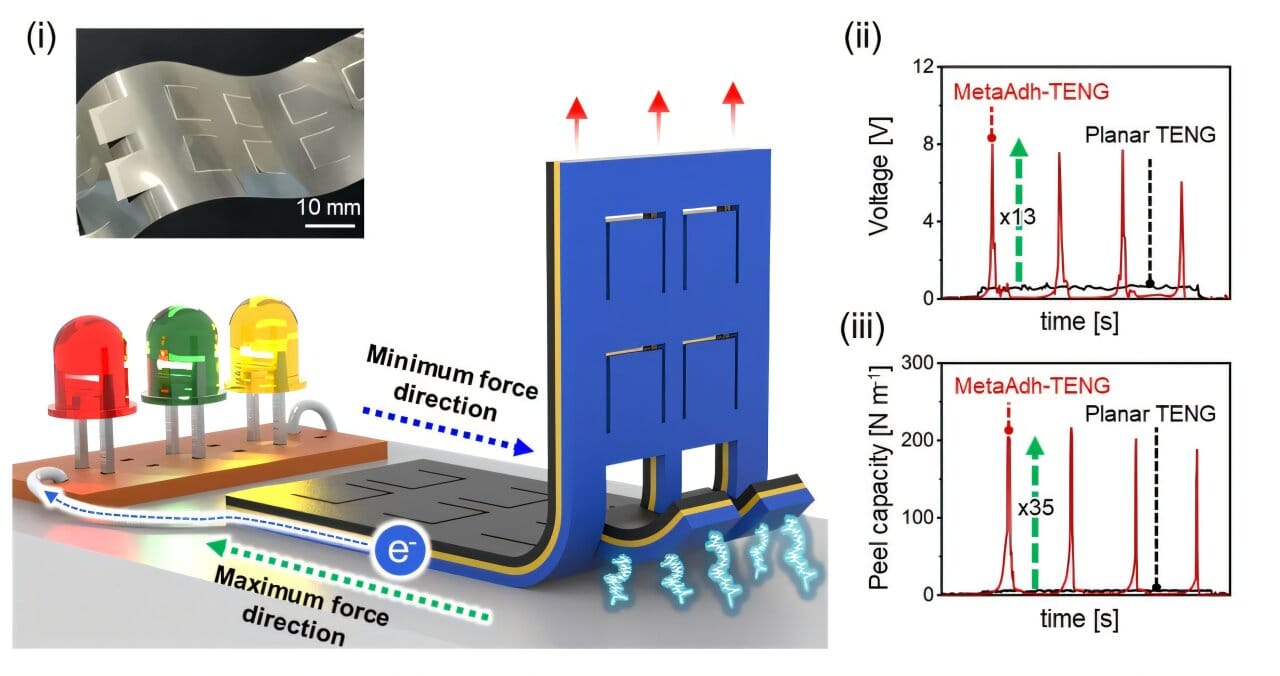Imagine opening a door, peeling a sticker, or pressing down on a surface—and in that simple act, generating a clear electrical signal. Thanks to a groundbreaking invention by researchers at Ulsan National Institute of Science and Technology (UNIST), this vision is now reality.
A team led by Professor Hoon Eui Jeong in the Department of Mechanical Engineering has developed an ultra-thin, transparent film that produces electricity purely from mechanical actions like pressing or peeling. Unlike traditional electronic devices, this smart film needs no batteries or external power. Instead, it draws energy from an age-old phenomenon: frictional electricity.
Harnessing the Power of Friction
Frictional electricity, also called triboelectricity, occurs when two materials touch and then separate, transferring electric charges in the process. It’s the same principle behind the static shock you feel when you rub a balloon on your hair or walk across a carpet.
What makes the UNIST breakthrough special is how the researchers transformed this natural effect into a controlled, practical tool. By embedding tiny, carefully designed cut patterns into an adhesive film, they created a surface that not only sticks firmly but also releases strong bursts of electricity when pressed, peeled, or flexed.
The design uses cuts shaped like the Korean alphabet character “ㄷ,” which guide how cracks form and move through the material. This design dramatically enhances the film’s performance—producing over 35 times more adhesion and about 13 times greater electrical output compared to conventional films.
Small Actions, Big Signals
“Everyday movements that seem ordinary can now become powerful electrical events,” said Hee Jin Lee, the first author of the study, published in Advanced Functional Materials. “When a crack halts at a junction and then resumes moving in the opposite direction, it produces a strong, detectable signal.”
This means that something as simple as peeling off tape could instantly generate an electrical pulse strong enough to trigger a warning system or activate a sensor. The researchers showed that the film’s cut patterns can be customized—by changing their direction or arrangement, the film can be tuned to respond differently depending on how or where it’s pressed or peeled.
From Doors to Conveyor Belts
The team has already demonstrated real-world uses for their invention. When attached to a door frame, the film produces an electrical signal every time the door opens, enabling it to activate alarms or lights without any wiring or batteries. On picture frames, the film detects peeling before the frame detaches from the wall, sending alerts to smartphones and preventing accidents.
In industrial settings, the film’s potential becomes even more impressive. When applied to conveyor belts, it only generates signals during reverse rotation—a clear sign of malfunction. This allows machines to shut down automatically before serious damage or accidents occur.
Toward a Battery-Free Future
Professor Jeong described the innovation as a leap forward in smart sensor technology. “This technology transforms a simple adhesive film into a smart, self-generating sensor,” he said. “It requires no batteries, no complicated electronics, just the movement of daily life. Its versatility makes it suitable for wearable devices, theft prevention, industrial monitoring, and beyond.”
The implications are vast. From homes and offices to factories and transport systems, this thin transparent film could embed intelligence and safety into everyday environments—without the burden of batteries, wires, or frequent maintenance.
A New Vision of Energy and Sensing
The story of UNIST’s smart film is a reminder that revolutionary technologies often emerge from simple ideas. A cut in a piece of film, guided by thoughtful design, can transform mechanical motion into powerful signals. In the age of the Internet of Things, where sensors are everywhere, such battery-free solutions may redefine how we connect with and protect the world around us.
This invention doesn’t just make machines smarter. It shows that even the smallest actions—a peel, a press, a touch—carry energy waiting to be unlocked.
More information: Hee Jin Lee et al, Metamaterial Adhesives‐Integrated Triboelectric Nanogenerators with Enhanced and Programmable Charge Generation and Adhesion, Advanced Functional Materials (2025). DOI: 10.1002/adfm.202506293






